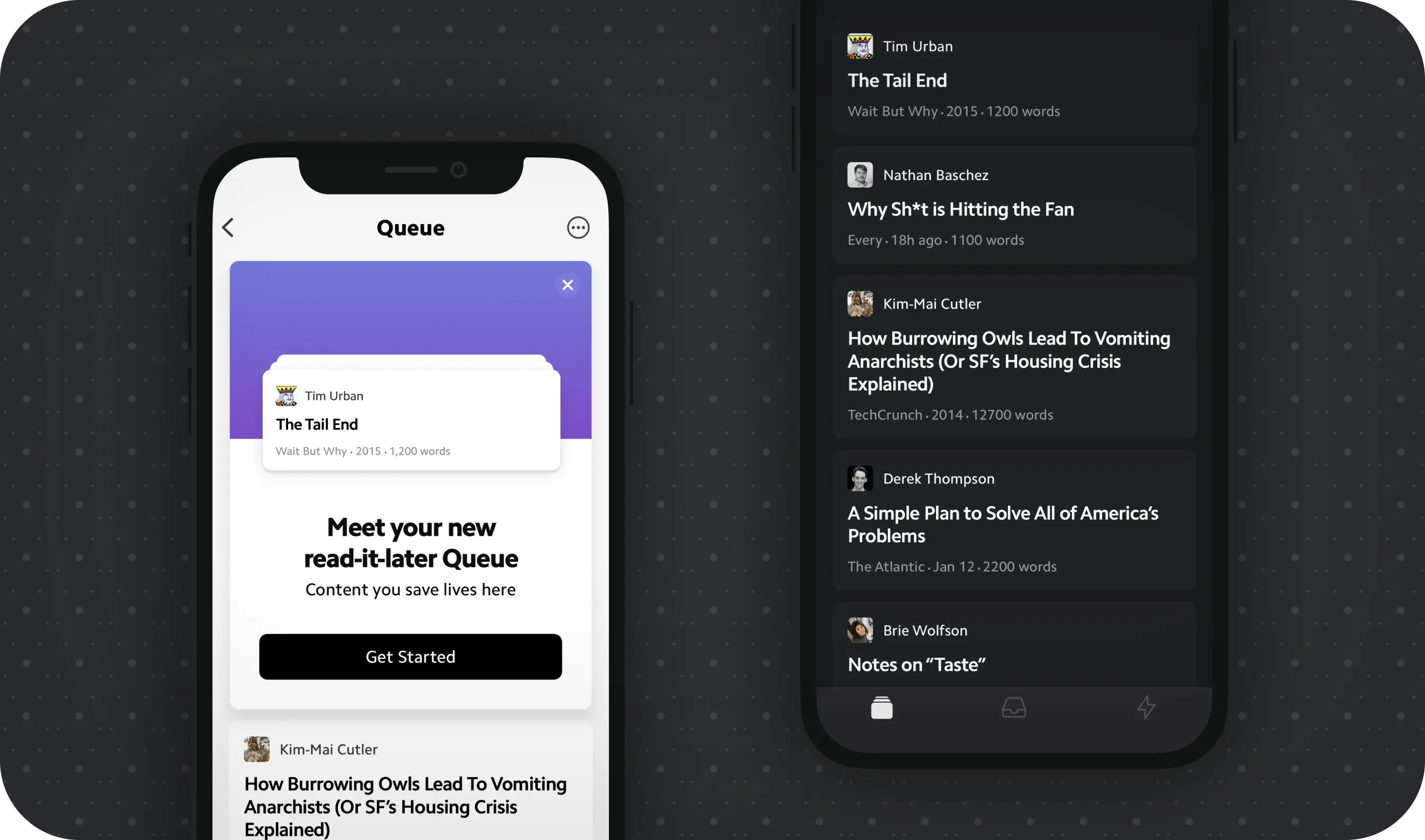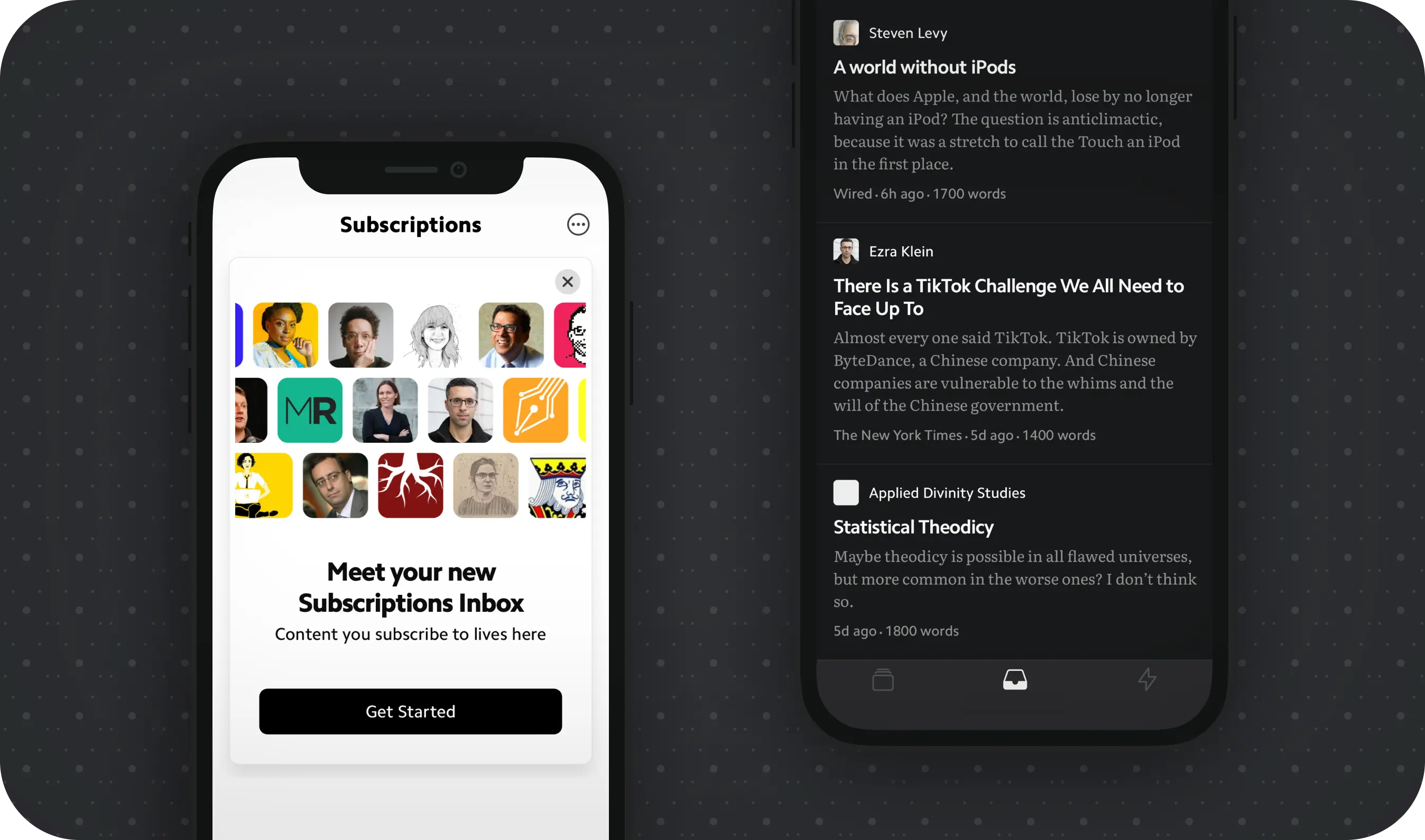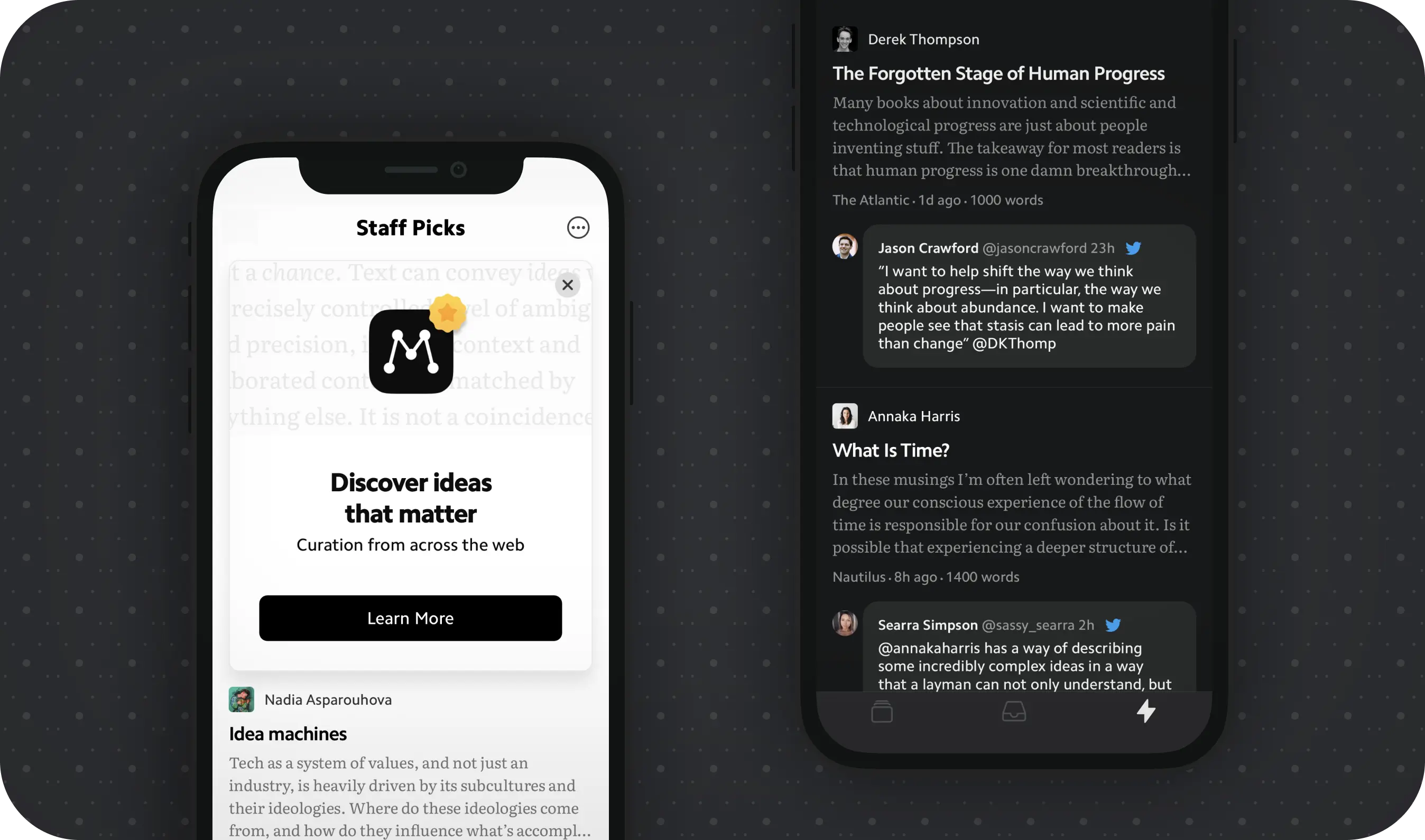Introducing Introducing Matter II
At Matter, we’re on a quest to build the perfect reader.
Today, we take a small step forward with Matter II – a simpler, clearer, more powerful version of our integrated reading product. Internally we’ve called it Project Nucleus because it reflects a narrowing of focus on our core: building the preeminent tool for active and demanding readers.
Why are we making these changes? Let’s start with why we’re building Matter in the first place.
We began Matter because we believe in the power of ideas. We believe ideas are as consequential and solid as matter, that the right idea at the right time is a powerful lever on the world. Our mission, put simply, is to increase the reach of ideas that matter.
As readers seeking good ideas, we have a challenge: How do we invest our attention when we can read anything that’s ever been published? We know the defaults we reflexively turn to – our headlines, feeds, and channels – aren’t good enough. What then?
Our ambition with Matter is to build a radically better decision engine for reading. One that does justice to the embarrassment of riches we have access to if only we could find them.
First, though, we have to perfect the basics. That’s what Matter II is about.
Since launching to public beta last October, we’ve received thousands of pieces of feedback. The most important thing we learned is that most readers come to Matter seeking a tool that offers greater capability around saving, organizing, and consuming their content.
Following that tune, we’ve streamlined the product, removing its social features and organizing it around the three major paradigms of reading the internet — read-it-later, subscriptions, and discovery. Let’s talk briefly about each.
Read-it-later
Almost 80% of our users come to us seeking a better read-it-later and content queuing experience. It makes sense: read-it-later is a good heuristic! It’s essentially your past self acting as a filter for what your future self may want to read when you have the time. It’s the stuff you’ve expressed intention about. For this reason, we’ve made your Queue the first tab in Matter.

We’ve worked hard to upgrade the read-it-later experience. On the backend, we’ve built a highly accurate parsing engine that handles web articles, emails, and Twitter threads. On the frontend, we’ve designed a modern queueing interface that’s fast, sleek, and intuitive. And fun: try shake-to-shuffle.
Read-it-later is a good heuristic, but it’s not perfect. All of us save more than we read, and as our lists build up, they tend to become stale. We started Matter to push beyond the basic paradigm and are excited to develop features to help with prioritization, resurfacing, and decay.
The Queue is an indispensable utility. It’s the foundation we start from, and we can promise that even as the product gets smarter, you’ll have full control over it.
Subscriptions
Every item in your Queue is there because you’ve added it. First, though, you have to encounter it. Subscriptions are how you reliably get new content from writers and sources you trust. Your subscriptions live in the second tab.
In Matter, you can subscribe to individual writers wherever they publish. It’s taken a lot of effort to enable this – extensive systems, tooling, and manual processes. Over the past three months, we’ve added over 10,000 leading journalists, bloggers, and authors to our system.

Why go to such lengths to offer individual writer feeds? Because, compared to publishers, you form more personal, trusting relationships with individual writers. You know their personality, style, and values at a higher resolution.
Today, many subscriptions are delivered through email in the form of newsletters, and Matter lets you bring those in too. We support all newsletters, including the publishers you know best: Substack, Ghost, Revue, and Bulletin.
In a few weeks, we’ll be adding support for RSS. Across your writers, newsletters, and RSS, you’ll have a unified location for all your favorite subscriptions.
Discovery
Subscriptions deliver new content from writers you trust. Still, much of the best stuff exists outside these relationships. Having a source of high-quality discovery is key.
Matter’s third tab is dedicated to Staff Picks. Everyday, we handpick 5-10 recommendations from across Twitter, after sifting through thousands of candidates. We curate the curators, as it were, looking for recommendations that are non-obvious, insightful, and important across a wide range of topics and viewpoints.

In the previous version of Matter, we let users post recommendations directly in the app. These in-app or “native” recommendations were supported by a broader social architecture: a profile on which the recommendations appeared, the ability to follow other users and see their profiles, and a system of feedback, consisting of likes, comments, and activity notifications.
In Matter II, we’ve removed these social features. In short, we learned that most users perceived them as a distraction from the core reading tool. It’s a decision we’re proud of: the result is a simpler, clearer, more focused product.
The removal of our social features also clears space for something we’ve long been excited about: deeper integration with Twitter. Twitter is the conversation layer of the internet. We think it should be possible to view the public conversation about any piece of content in the tool you use to read it. Soon it will be.
The road ahead
William Gibson said, “The future is already here. It’s just not evenly distributed yet.” Something similar could be said of ideas. They’re out there. They just need help finding the minds they’ll blaze in. Or in more prosaic terms, we need help finding them.
We think it’s possible to build a better decision engine for reading. It’s a hard problem. While there are clear failure modes (eg. ranking systems weighted toward popularity and recency), making real progress over the status quo will take creativity, experimentation, and many iterations over a long period of time. Not only have we not solved it yet, we’ve barely begun.
Still, we can predict a few things with confidence: The supply of great content will continue to rise (and nichify), attention will always be scarce, and the returns to making good decisions about what to read will remain high — and indeed, increase — over time.
Helping people get better ideas through reading is a long term, vitally important project. We believe the path to this future starts with giving readers a better tool. With Matter II, we think we’re on the way.